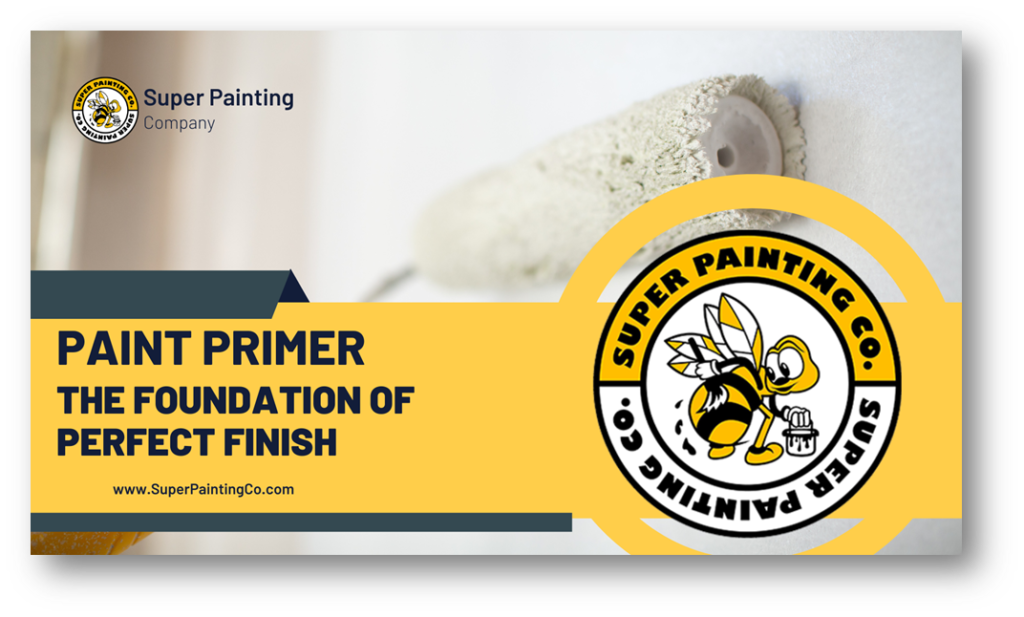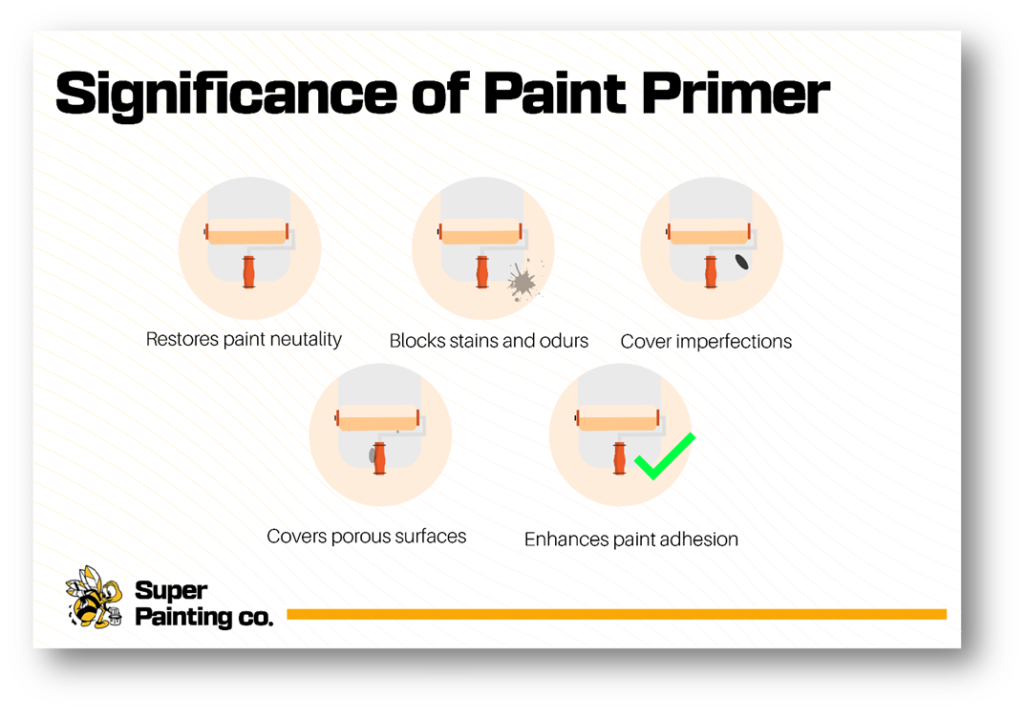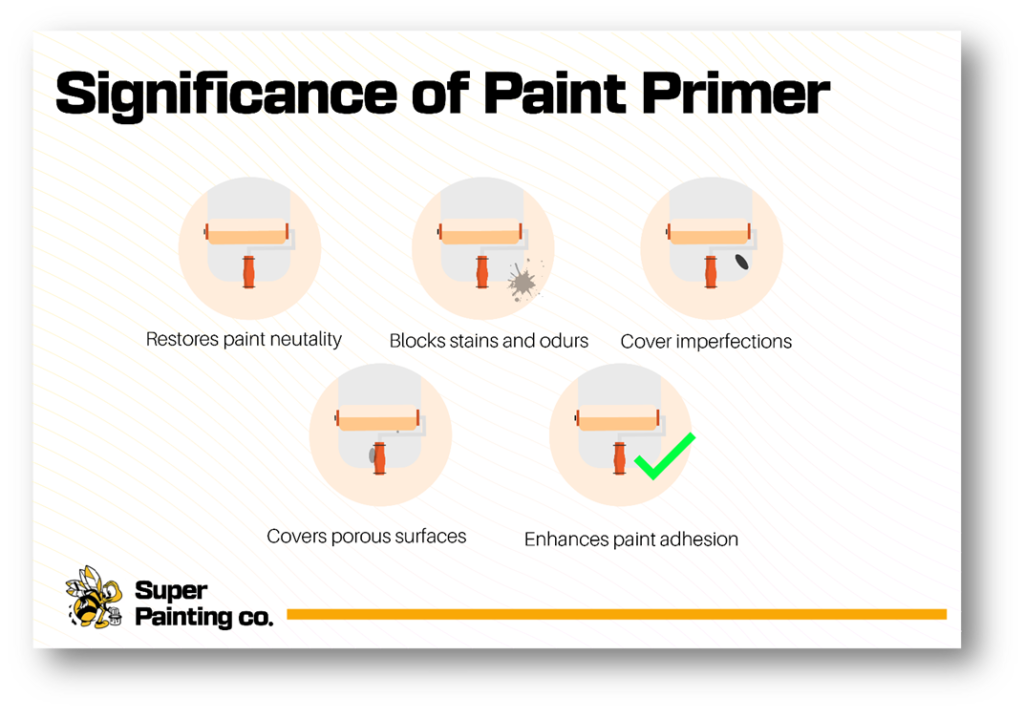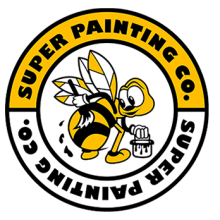Exploring the Significance of Paint Primer
The Foundation of a Perfect Finish!

Have you ever wondered what exactly paint primer is and whether it’s necessary for your painting projects? Well, you’re not alone! Let’s dive into the world of primer and find out why it’s an essential step in the painting process.
So, what does a Primer do?
Primer creates a stable and durable surface for your paint to adhere to. Certain surfaces, like wood and masonry, are quite porous and can absorb a significant amount of paint if they’re not pre-sealed with primer.
Even drywall benefits from being treated with primer if you want to achieve the best results with your paint job.
But here’s the great part: primer doesn’t just make your painting process easier; it also helps your project in the long run. The primer forms a seal on the surface, making it resistant to moisture and stains.
This means that your paint will stay looking fresh and fabulous for a longer period of time.
How to Apply Primer?
Now, let’s talk about how to apply primer. The application process will vary depending on the surface you’re working with, so it’s important to read and follow the manufacturer’s instructions on the product you’re using. These instructions will typically include details about the number of coats needed, drying time, and any potential risks associated with the product.
As a general rule, it’s recommended to apply two coats of primer. You can use a high-quality roller and brush, just like you would with paint. Make sure to apply the primer evenly, ensuring that every area where the paint will go is covered.
By the way, if you’re looking for reliable painting professionals, you can trust Super Painting Contractors. We’ve been the go-to name in Torrance painting contractors for the past 10 years. Give us a call at 310-381-9027 for a free estimate on your next painting project.
Benefits of Paint Primer
When it comes to painting, priming is often recommended by experts, despite the additional cost and time it adds to your project. But is priming really necessary? Let’s explore the various benefits of priming and also identify situations where it may not be required.
First and foremost, it’s important to understand that primer is not just a coat of white paint applied under the colored paint. It serves several valuable purposes that can enhance the overall quality and longevity of your paint job. Here are the key benefits you should consider of priming.

Restoring paint color neutrality
Primer helps bring the paint color back to a neutral state, ensuring that the final color appears as intended.
Sealing pores on unpainted surfaces
Unpainted surfaces like drywall and wood contain pores that can absorb paint unevenly, resulting in an inconsistent finish. Primers seal these pores, creating a smooth and uniform surface for painting.
Enhancing paint adhesion
Primers provide a surface for the paint to adhere to, creating a strong bond between the paint and the surface. This promotes better adhesion and reduces the risk of peeling or chipping.
Blocking stains and odors
Primers are designed to block out stubborn stains and odors, such as smoke or water damage, preventing them from bleeding through the top coat.
Covering imperfections
If you have patched or repaired parts of a wall, primer helps in covering these imperfections, ensuring a seamless and professional-looking paint job.
Optimal surface preparation
Applying a primer optimizes the surface for paint application. By providing a solid foundation, primer reduces the number of top coat paint coats required, saving both time and money.
Considering these benefits, it becomes clear that priming actually saves money and time in the long run. While it does add an initial cost and some additional time to the project, the advantages it brings outweigh these drawbacks. Primer is generally more affordable than paint and addresses several issues, resulting in a smoother and more efficient painting process. With fewer coats of top coat paint required, the overall project completion time is also reduced.
When Applying Primer is Necessary?
Now, let’s discuss when you should use a primer and when you can potentially skip it.
New drywall or unpainted wood
These surfaces are highly absorbent and tend to soak up paint quickly. Applying a primer fills the pores and creates a sealed surface that is ready for painting. This ensures that you achieve satisfactory coverage with fewer coats of top coat paint.
Major color changes
If you are transitioning from one major color to another, applying a primer becomes crucial. Without a primer, the old color may mix with the new color, resulting in an undesirable shade. Using a primer brings the surface back to white, providing a clean slate for the new color.
Painting over glossy or oil-based paints
Glossy or oil-based paints create a smooth and slick surface that can make it difficult for the new paint to adhere properly. A bonding primer is recommended in such cases, as it adheres to the glossy surface and provides a suitable base for the top coat paint to stick to.
Patched or repaired drywall
When you have patched or repaired sections of drywall, the color of these patches may differ from the existing paint. Priming helps to conceal these imperfections by bringing all surfaces back to a neutral white, ensuring a seamless and consistent finish.
So, there you have it! Primer is an essential step in the painting process, providing a stable surface for your paint and helping it last longer. Whether you’re working with wood, masonry, or drywall, using primer will give you better results.
If you have any more questions or need further assistance, feel free to ask. Happy painting!





